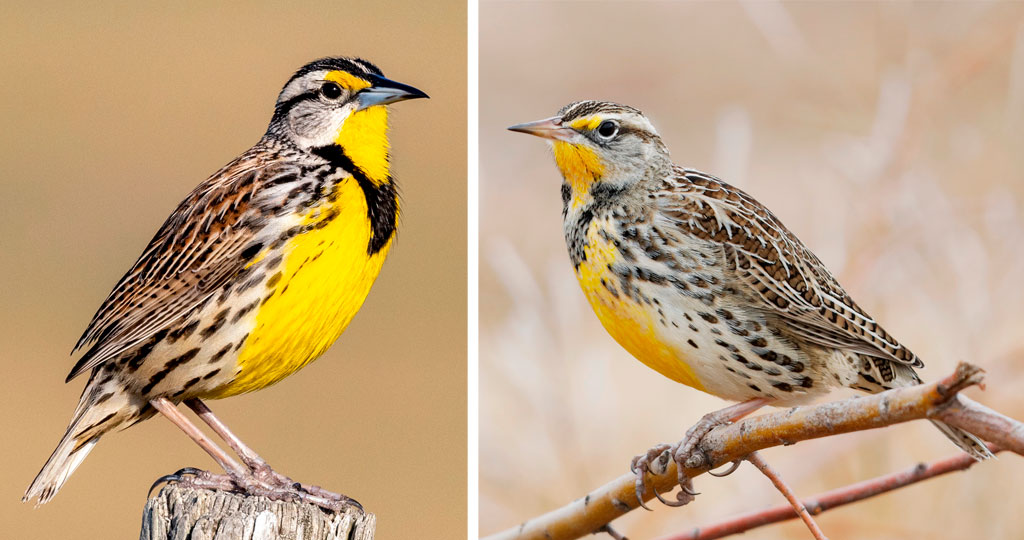
Eastern (left) and western meadowlarks.
Have you seen the meadowlarks? We are fortunate in Burnet County to have both eastern and western meadowlarks (Sturnella magna and Sturnella neglecta).
You can differentiate between the two with binoculars or a camera. The eastern meadowlark will have yellow between their eyes and the beginning of their bill. Meriwether Lewis (of Lewis and Clark) was the first to notice the slight difference between the two species.
These birds have extremely strong muscles connecting to their bill. One way they eat is by thrusting their bill into the soil and prying it open with their beak, thus leaving a gaping (gaping to birds) hole full of unsuspecting bugs.
COOLER WEATHER BEDS
It would be an understatement to say cooler weather has arrived.What to do with our garden beds is the question? The one thing you DON’T want to do is leave them alone! Weeds could take over or rain could wash away all of the nutrients.
Here are some suggestions of what to do with your beds in wintertime.
- Plant a cover crop such as crimson clover. The low, tight cover crop will reduce weed invasion, and, in the spring, you can till it in as green manure.
- Most definitely, you can plant a winter garden! Broccoli, beets, carrots, cabbage, cauliflower, celery, fava beans, onions, peas, radishes, are examples of Zone 8 winter crops.
- Apply fresh manure. When applying fresh manure to a garden, make sure the soil is no warmer than 55 degrees. If the soil is warmer than 55 degrees when you apply the fresh manure, you run the risk of hot composting, which can kill the beneficial life in the soil. After application, mark your calendar for six months. This is approximately how long it can take for the pathogens to die out — aka safe to plant long season crops.
- Do you have lots of large leaves around your home? You can rake up large leaves and plop them on top of your garden bed. Or, if you’re feeling adventurous, mulch the large, raked leaves and then place them on your garden bed.
- Do you like all things purty? Put down a 4-inch-plus layer of fresh mulch. Then, place decorative pots filled with evergreens or cool season pansies, violas, and snapdragons.
DECEMBER DUTIES
- As soon as the soil dries and you have made your last cut on the fields or lawns for a long moment, make sure to winterize your equipment before you put it up for winter hibernation. Clean your tools and oil them. Drain all the gasoline engines and oil/grease joints. Don’t let that gasoline sit in your equipment (such as mowers, edgers, etc.) over the winter. Be sure to run the engines until all of the gasoline has been depleted.
- During the upcoming months, we are going to need to be vigilant as to the weather and our opportunities to prepare our gardens for the spring planting. Gentle reminder: we have time. Do a little each day or every other day.
- Time to plant your refrigerated bulbs. Both tulip and hyacinth bulbs will provide wonderful color in your flower beds.
- WARNING! Don’t start to prune your fruit trees yet. Pruning promotes growth and budding. Pruning flowering plants during this season confuses the plants. Deadheading or pruning sends signals to the plant or tree that it is spring. We don’t want to fool our fruit trees or roses as to what season it is.
Till next time. Keep your souls and soles in your garden!
"In the Garden" is written by father-daughter team Bill and Martelle Luedecke. Contact Martelle at 512-769-3179 or luedeckephotography@gmail.com. Contact Bill at 512-577-1463 or bill@texasland.net.
Read more "In the Garden" columns in the 101 Lawn & Garden Guide.









